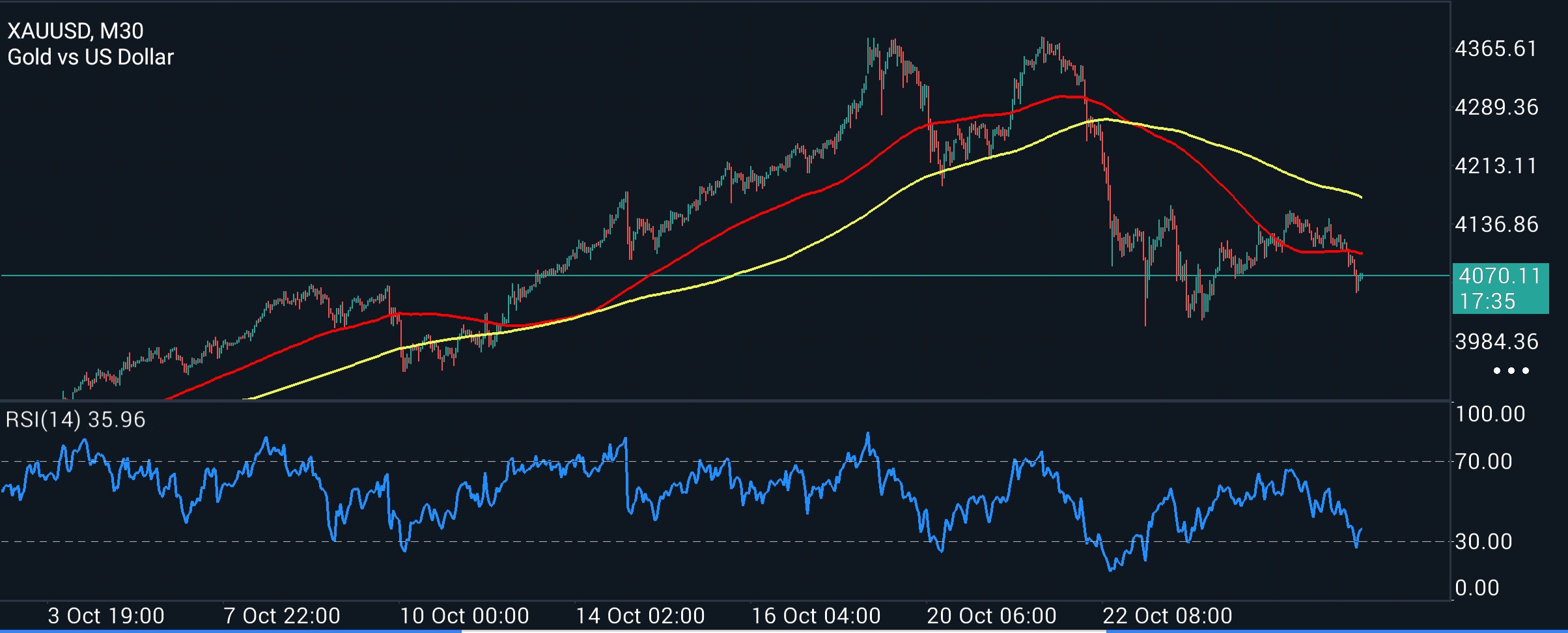Trading Strategies – Complete Educational Guide
A trading strategy is a systematic, rules-based method for entering and exiting trades with clearly defined risk parameters. This comprehensive guide covers core frameworks, rule development, implementation, risk management, and validation techniques. Educational only; no investment advice.

Recommended brokers
Table of Contents
1. Introduction to Trading Strategies
1.1 What is a Trading Strategy?
A trading strategy is a fixed plan designed to achieve profitable returns by going long or short in markets. The key difference between a successful trader and an unsuccessful one often lies not in the strategy itself, but in the discipline to follow it consistently.
At its core, a trading strategy should answer these fundamental questions:
- What markets will you trade?
- When will you enter a trade?
- How much will you risk on each trade?
- When will you exit a profitable trade?
- When will you exit a losing trade?
- How will you manage positions once entered?
Key Concept:
A trading strategy removes emotion from decision-making by providing a systematic framework for all trading activities. This consistency is what separates professional traders from amateurs.
1.2 Strategy Components
Every complete trading strategy consists of several essential components that work together to form a cohesive system:
Market Analysis Method
The approach used to identify trading opportunities:
- Technical analysis (charts, indicators, patterns)
- Fundamental analysis (economic data, company financials)
- Quantitative analysis (statistical models, algorithms)
- Sentiment analysis (market mood, positioning)
Entry Rules
Specific conditions that must be met to initiate a trade:
- Price levels or patterns
- Indicator signals or crossovers
- Volume characteristics
- Time-based triggers
Exit Rules
Conditions for closing positions:
- Profit targets (fixed, trailing, or conditional)
- Stop losses (fixed, trailing, or volatility-based)
- Time-based exits
- Signal-based reversals
Risk Management Protocol
Rules to protect capital:
- Position sizing methodology
- Maximum risk per trade
- Daily/weekly loss limits
- Portfolio correlation management
1.3 Importance of a Systematic Approach
Trading without a defined strategy is essentially gambling. A systematic approach provides numerous benefits that contribute to long-term success:
- Objectivity: Removes emotional decision-making
- Consistency: Creates repeatable processes
- Measurability: Allows performance tracking and improvement
- Risk Control: Provides predefined risk parameters
- Adaptability: Enables systematic refinement
Trading Truth:
Markets are inherently random in the short term. A trading strategy doesn't predict the future; it provides an edge that, when applied consistently over many trades, should result in profitability.
2. Core Trading Frameworks
2.1 Trend-Following Strategies
Trend-following strategies aim to capture gains by analyzing the momentum of an asset in a particular direction. These strategies operate on the premise that assets in a strong trend will continue moving in that direction until a reversal is confirmed.
Key principles of trend-following:
- "The trend is your friend" - trade in the direction of the established trend
- Let profits run by using trailing stops or multiple profit targets
- Cut losses quickly with predefined stop losses
- Use pullbacks within trends for better entry points
Common trend-following techniques:
| Technique | Description | Indicators Used | Best Market Conditions |
|---|---|---|---|
| Moving Average Crossover | Buy when shorter MA crosses above longer MA; sell when opposite occurs | EMA, SMA (commonly 9/21, 20/50, 50/200 periods) | Strong trending markets |
| Trendline Breakouts | Enter when price breaks established trendlines with confirmation | Manual trendlines, volume confirmation | Established trends with clear structure |
| ADX Trend Strength | Trade in direction of trend when ADX is above 25 (strong trend) | ADX, +DI, -DI | Emerging or strong trends |
| Ichimoku Cloud | Comprehensive trend identification with support/resistance | Ichimoku Kinko Hyo (all components) | All market conditions with trend bias |
Trend-Following Challenges:
Trend-following strategies typically have lower win rates (often 40-50%) but aim for higher risk-reward ratios. They perform poorly in ranging or choppy markets, leading to multiple small losses until a strong trend emerges.
2.2 Mean-Reversion Strategies
Mean-reversion strategies operate on the principle that prices tend to return to their average or equilibrium level over time. These strategies identify overbought or oversold conditions and trade against the extreme move, expecting a return to the mean.
Key principles of mean-reversion:
- Prices deviate from their historical averages but eventually revert
- Identify overextended moves using statistical measures
- Trade against the extreme with tight risk management
- Profit from the "snap back" to average prices
Common mean-reversion techniques:
| Technique | Description | Indicators Used | Best Market Conditions |
|---|---|---|---|
| Bollinger Bounce | Buy when price touches lower band, sell when touches upper band | Bollinger Bands (20,2), RSI confirmation | Ranging or mildly trending markets |
| RSI Extremes | Buy when RSI drops below 30, sell when rises above 70 | RSI (14-period standard) | Volatile but range-bound markets |
| Stochastic Reversals | Trade when Stochastic enters/leaves overbought/oversold territory | Stochastic Oscillator (14,3,3) | Cyclical markets with clear oscillations |
| Pairs Trading | Trade the relative performance between two correlated assets | Correlation coefficients, Z-score | Any market condition with correlated pairs |
Mean-Reversion Advantage:
Mean-reversion strategies typically have higher win rates (often 60-70%) but smaller profit targets. They work best in ranging markets but can experience significant losses during strong trends if proper risk management isn't followed.
2.3 Breakout Strategies
Breakout strategies aim to capture the initial momentum when an asset's price moves beyond a defined support or resistance level with increased volume. These strategies capitalize on the increased volatility and directional movement that often follows breakouts.
Key principles of breakout trading:
- Identify consolidation patterns and key levels
- Wait for confirmation of the breakout (price close beyond level)
- Volume confirmation increases probability of genuine breakout
- Manage false breakouts with proper stop placement
Common breakout patterns and techniques:
| Pattern/Technique | Description | Entry Trigger | Stop Placement |
|---|---|---|---|
| Horizontal Resistance Break | Price breaks above established resistance level | First close above resistance with increased volume | Below the breakout level or below recent swing low |
| Triangle Breakout | Break from symmetrical, ascending, or descending triangle | Close outside triangle boundary with volume spike | Opposite side of triangle pattern |
| Channel Breakout | Break above/below established trading channel | Close outside channel with momentum confirmation | Back inside the channel |
| Volatility Breakout | Break beyond recent volatility range | Price movement exceeding ATR-based threshold | Based on ATR multiple (e.g., 1.5x ATR) |
Breakout Trading Tip:
Wait for the first pullback to the breakout level for a higher probability entry. This "retest and confirm" approach filters out false breakouts and provides better risk-reward ratios.
2.4 Event-Driven Strategies
Event-driven strategies capitalize on price movements caused by specific scheduled or unscheduled events. These strategies require careful planning and risk management due to the increased volatility around events.
Common event-driven trading opportunities:
| Event Type | Description | Trading Approach | Risk Considerations |
|---|---|---|---|
| Economic Releases | Scheduled announcements (GDP, employment, inflation data) | Trade the deviation from expectations or momentum continuation | High volatility, potential slippage, widened spreads |
| Earnings Reports | Company quarterly earnings announcements | Trade earnings surprises or implied volatility changes | Gap risk, increased volatility, after-hours trading |
| Central Bank Announcements | Interest rate decisions, policy statements, press conferences | Trade policy direction changes or market reaction patterns | Extreme volatility, unpredictable price action |
| Geopolitical Events | Elections, trade negotiations, conflicts | Trade market sentiment shifts or safe-haven flows | Unpredictable outcomes, gap risk over weekends |
Event-driven trading requires specialized risk management:
- Reduce position sizes significantly (25-50% of normal size)
- Use wider stop losses to account for increased volatility
- Consider trading options or other instruments to define risk
- Have a clear exit plan for both favorable and adverse outcomes
- Monitor broker margin requirements which may change around events
2.5 Algorithmic Strategies
Algorithmic trading involves using computer programs to execute trades based on predefined rules and conditions. These strategies can process vast amounts of data and execute trades at speeds impossible for human traders.
Types of algorithmic strategies:
| Strategy Type | Description | Complexity | Technology Requirements |
|---|---|---|---|
| Statistical Arbitrage | Exploit pricing inefficiencies between related securities | High | Advanced statistical software, fast execution |
| Market Making | Provide liquidity by simultaneously posting bid/ask offers | Very High | Ultra-low latency systems, exchange colocation |
| Execution Algorithms | Break large orders into smaller pieces to minimize market impact | Medium | Order management systems, market data feeds |
| Trend-Following Systems | Automated version of discretionary trend strategies | Low-Medium | Charting platform with automation capabilities |
Algorithmic trading development process:
- Strategy Conceptualization: Define the trading idea and edge
- Rule Specification: Create detailed, unambiguous trading rules
- Backtesting: Test strategy on historical data with realistic assumptions
- Programming: Code the strategy in appropriate language/platform
- Paper Trading: Test in real-time with simulated execution
- Live Deployment: Start with small capital and monitor closely
Algorithmic Trading Warning:
Backtested results often look better than live performance due to unrealistic assumptions about execution, slippage, and market impact. Always include conservative estimates for these factors in your testing.
3. Developing Your Trading Strategy
3.1 Defining Entry Rules
Clear, unambiguous entry rules are the foundation of any trading strategy. These rules should specify exactly when and how to enter a trade, leaving no room for interpretation or emotional decision-making.
Components of effective entry rules:
Setup Conditions
The broader market conditions that must be present before considering a trade:
- Trend direction (e.g., price above 200-day moving average)
- Volatility environment (e.g., ATR within specific range)
- Market hours (e.g., only during specific trading sessions)
- Correlation with other assets (e.g., specific sector alignment)
Trigger Conditions
The specific price action or indicator signal that initiates the trade:
- Price level breaks (e.g., break above yesterday's high)
- Indicator crossovers (e.g., MACD crossing above signal line)
- Pattern completions (e.g., head and shoulders pattern complete)
- Volume signals (e.g., volume spike above 20-day average)
Confirmation Filters
Additional conditions that must be met to validate the trade signal:
- Multiple timeframe alignment (e.g., daily and 4-hour trends aligned)
- Indicator confluence (e.g., RSI and Stochastic both signaling)
- Volume confirmation (e.g., above average volume on breakout)
- Fundamental alignment (e.g., earnings season considerations)
Entry Rule Example:
Setup: EUR/USD above 200-period EMA on daily chart
Trigger: Price breaks above 1-hour resistance level with close above
Confirmation: RSI(14) above 50 but below 70, volume 20% above 20-period average
3.2 Defining Exit Rules
Exit rules are arguably more important than entry rules, as they determine both profitability and risk control. A complete strategy must have predefined rules for both losing exits (stop losses) and profitable exits (profit targets).
Stop loss placement techniques:
| Method | Description | Advantages | Disadvantages |
|---|---|---|---|
| Percentage Stop | Fixed percentage below entry price (e.g., 2% risk) | Simple to calculate, consistent risk per trade | Ignores market structure and volatility |
| ATR Stop | Multiple of Average True Range below entry (e.g., 1.5x ATR) | Adapts to current volatility, respects market conditions | Variable risk per trade in dollar terms |
| Support/Resistance Stop | Placed beyond key technical levels | Respects market structure, logical placement | Requires subjective analysis, variable risk |
| Indicator-Based Stop | Based on indicator levels (e.g., moving average, parabolic SAR) | Systematic, removes subjectivity | May exit prematurely in volatile conditions |
Profit target strategies:
| Method | Description | Best For | Risk-Reward Profile |
|---|---|---|---|
| Fixed Risk-Reward | Target set at specific multiple of risk (e.g., 2:1 reward:risk) | Systematic strategies, beginners | Consistent, predictable |
| Technical Targets | Target set at key resistance/support or measured moves | Technical pattern trading | Variable, market-dependent |
| Trailing Stops | Stop moves with price to lock in profits | Trend-following strategies | Unlimited upside, variable results |
| Partial Profit Taking | Take partial profits at targets, let remainder run | Balancing profit-taking with trend capture | Reduced risk, guaranteed partial profits |
3.3 Risk Management Integration
Risk management is not a separate component but should be fully integrated into every aspect of your trading strategy. Proper risk management ensures that you survive long enough to benefit from your trading edge.
Essential risk management elements:
Position Sizing
Determining how much capital to allocate to each trade:
- Fixed Fractional: Risk fixed percentage of account per trade (1-2% recommended)
- Fixed Ratio: Increase position size based on account growth
- Kelly Criterion: Mathematical optimal position sizing based on edge
- Volatility Adjusted: Adjust position size based on current market volatility
Correlation Management
Avoiding overexposure to similar market movements:
- Limit number of correlated positions (e.g., similar currency pairs)
- Monitor beta-weighted portfolio exposure
- Diversify across uncorrelated strategies and timeframes
- Understand sector and macroeconomic correlations
Drawdown Controls
Protocols for managing losing periods:
- Daily loss limits (e.g., stop trading after 3% daily loss)
- Weekly loss limits (e.g., stop trading after 6% weekly loss)
- Maximum drawdown limits (e.g., reduce risk after 10% account drawdown)
- Strategy suspension rules (e.g., pause strategy after X consecutive losses)
Risk Management Formula:
Position Size = (Account Balance × Risk Percentage) / (Entry Price - Stop Loss Price)
Example: $10,000 account, 1% risk ($100), stock at $50, stop at $49 → Position size = $100 / $1 = 100 shares
4. Timeframes and Market Selection
4.1 Choosing Your Timeframe
The trading timeframe you choose significantly impacts your strategy's characteristics, including trade frequency, profit potential, stress level, and required time commitment.
| Timeframe | Typical Hold Period | Trades Per Day/Week | Best For | Challenges |
|---|---|---|---|---|
| Scalping | Seconds to minutes | 10-100+ per day | Full-time traders, quick decision makers | High stress, commission costs, requires intense focus |
| Day Trading | Minutes to hours | 1-10 per day | Active traders, those who can monitor markets daily | Time commitment, emotional control, overnight gap risk avoidance |
| Swing Trading | Days to weeks | 1-10 per month | Part-time traders, those with other commitments | Overnight risk, weekend gaps, requires patience |
| Position Trading | Weeks to years | 1-10 per year | Long-term investors, fundamental analysts | Large drawdowns, requires significant capital, patience |
Factors to consider when choosing your timeframe:
- Time availability: How many hours can you dedicate to trading?
- Personality: Are you patient or do you prefer action?
- Capital: Shorter timeframes often require more capital for proper position sizing
- Risk tolerance: Shorter timeframes typically have smaller individual losses but more frequent decisions
- Market access: Some strategies require specific market hours or sessions
4.2 Market Selection
Different financial markets have unique characteristics that may align better with certain trading strategies and personalities. Understanding these differences is crucial for strategy development.
| Market | Characteristics | Best Strategy Types | Considerations |
|---|---|---|---|
| Forex (Currencies) | High liquidity, 24-hour market, high leverage available | Trend-following, breakout, carry trades | Understand macroeconomic factors, high leverage risks |
| Stocks | Company-specific risk, earnings events, diverse sectors | Mean-reversion, earnings plays, sector rotation | Research intensive, overnight gap risk |
| Futures | Standardized contracts, high leverage, defined expiration | Trend-following, spread trading, arbitrage | Contract rollover, margin requirements |
| Options | Non-linear payoffs, defined risk strategies, time decay | Volatility trading, income generation, hedging | Complex pricing, multiple greeks to manage |
| Cryptocurrencies | 24/7 market, extreme volatility, evolving regulation | Momentum, breakout, volatility strategies | Regulatory uncertainty, custody risks, high volatility |
Market Selection Tip:
Start by focusing on one or two markets that align with your strategy and personality. Master those markets before expanding to others. Specialization often leads to better performance than spreading attention too thinly.
4.3 Multi-Timeframe Analysis
Multi-timeframe analysis involves examining the same asset across different timeframes to gain a more comprehensive view of market structure and improve trade timing.
Benefits of multi-timeframe analysis:
- Identifies the dominant trend direction
- Provides better entry and exit timing
- Reduces false signals from noise on shorter timeframes
- Helps identify key support and resistance levels
- Improves risk-reward ratios by trading in direction of higher timeframe trend
Common multi-timeframe combinations:
| Primary Trading Timeframe | Higher Timeframe (Trend) | Lower Timeframe (Entry) | Application |
|---|---|---|---|
| 4-Hour | Daily | 1-Hour / 30-Minute | Swing trading with daily trend alignment |
| 1-Hour | 4-Hour | 15-Minute / 5-Minute | Day trading with intraday trend context |
| 15-Minute | 1-Hour | 5-Minute / 1-Minute | Scalping with short-term momentum |
| Weekly | Monthly | Daily | Position trading with long-term trend |
Multi-timeframe analysis protocol:
- Start with the highest timeframe to determine the dominant trend
- Move to your primary trading timeframe to identify trade setups
- Use the lowest timeframe for precise entry and exit timing
- Ensure alignment between timeframes for highest probability trades
5. Strategy Testing and Validation
5.1 Backtesting Strategies
Backtesting involves applying your trading strategy to historical data to see how it would have performed. Proper backtesting is essential for validating strategy concepts before risking real capital.
Backtesting best practices:
Data Quality
Ensure your historical data is accurate and complete:
- Use clean, adjusted data for stocks (accounting for splits, dividends)
- Include sufficient history (multiple market cycles if possible)
- Verify data sources and timeframes
- Include after-hours data if relevant to your strategy
Realistic Assumptions
Account for real-world trading conditions:
- Include commissions and fees in calculations
- Model slippage (difference between expected and actual fill price)
- Account for bid-ask spreads, especially in less liquid markets
- Consider market impact for larger position sizes
Robustness Testing
Ensure your strategy isn't overfitted to specific conditions:
- Test across different market regimes (bull, bear, ranging)
- Use walk-forward analysis to test parameter stability
- Test on out-of-sample data (data not used in development)
- Check performance across different but related instruments
Backtesting Pitfalls:
Avoid over-optimization (curve-fitting) where you adjust parameters until they work perfectly on historical data but fail in live markets. If your strategy requires extremely precise parameters to be profitable, it's likely overfitted.
5.2 Forward Testing (Paper Trading)
Forward testing, or paper trading, involves applying your strategy to real-time market data with simulated execution. This bridges the gap between backtesting and live trading.
Benefits of forward testing:
- Tests strategy in current market conditions
- Provides experience with order entry and platform usage
- Reveals execution issues not apparent in backtesting
- Allows refinement of entry/exit techniques
- Builds confidence in the strategy before going live
Effective forward testing practices:
- Treat paper trading as seriously as live trading
- Use realistic position sizes based on intended capital
- Record all trades with detailed notes in a trading journal
- Test during different market sessions and conditions
- Continue until you have a statistically significant sample (50-100+ trades)
Forward Testing Duration:
Forward test for at least 2-3 months or until you have 50-100 trades, whichever comes later. This provides exposure to different market conditions and enough data for meaningful analysis.
5.3 Performance Metrics and Analysis
Proper performance measurement is essential for evaluating and improving your trading strategy. Key metrics provide insight into strategy effectiveness, risk, and consistency.
| Metric | Calculation | Interpretation | Target Range |
|---|---|---|---|
| Win Rate | Winning Trades / Total Trades | Percentage of trades that are profitable | Varies by strategy (40-60% typical) |
| Risk-Reward Ratio | Average Win / Average Loss | Profit per unit of risk | 1.5:1 or higher recommended |
| Expectancy | (Win Rate × Avg Win) - (Loss Rate × Avg Loss) | Expected profit per trade | Positive and stable |
| Profit Factor | Gross Profit / Gross Loss | Efficiency of strategy | Above 1.1 (preferably above 1.5) |
| Maximum Drawdown | Largest peak-to-trough decline | Worst-case loss experience | Strategy and risk tolerance dependent |
| Sharpe Ratio | Excess Return / Standard Deviation of Returns | Risk-adjusted returns | Above 1.0 (higher is better) |
Additional analysis to perform:
- Trade distribution analysis: Look for patterns in winning vs. losing trades
- Time-based analysis: Check if performance varies by time of day, day of week, or month
- Market regime analysis: Evaluate performance in different market conditions
- Correlation analysis: Check if performance correlates with market indices or other factors
Performance Evaluation:
No single metric tells the whole story. Evaluate your strategy using multiple complementary metrics. A strategy with a 40% win rate can be highly profitable if it has a strong risk-reward ratio, while a strategy with a 70% win rate can lose money if losses are much larger than wins.
6. Trading Psychology and Discipline
Even the best trading strategy will fail without the psychological discipline to execute it consistently. Trading psychology addresses the mental and emotional challenges that traders face.
Common psychological challenges:
| Psychological Challenge | Description | Impact on Trading | Management Techniques |
|---|---|---|---|
| Fear of Missing Out (FOMO) | Anxiety about missing profitable opportunities | Entering trades without proper setup, chasing prices | Strict adherence to entry rules, acceptance that missed trades are part of trading |
| Loss Aversion | Strong preference to avoid losses over acquiring gains | Holding losing positions too long, moving stop losses | Predefined risk limits, focus on long-term expectancy |
| Revenge Trading | Trying to immediately recover losses | Overtrading, increasing position sizes irrationally | Daily loss limits, mandatory breaks after significant losses |
| Confirmation Bias | Seeking information that supports existing beliefs | Ignoring contrary signals, selective perception | Systematic analysis, consideration of alternative scenarios |
| Overconfidence | Excessive belief in one's trading ability | Taking excessive risk, neglecting proper analysis | Regular performance review, maintaining trading journal |
Developing trading discipline:
- Create a detailed trading plan: Document all rules and procedures
- Establish pre-trade routines: Mental preparation before trading sessions
- Implement post-trade analysis: Review all trades regardless of outcome
- Practice mindfulness: Develop awareness of emotional states
- Set realistic expectations: Understand that losses are part of trading
- Maintain physical and mental health: Regular exercise, proper sleep, stress management
Psychology Tip:
The market doesn't care about your financial goals, your analysis, or your feelings. Successful traders accept this reality and focus on executing their plan regardless of emotional state or desired outcomes.
7. Broker Comparison for Strategy Implementation
Choosing the right broker is critical for successfully implementing your trading strategy. Different brokers offer varying platforms, fee structures, and execution quality that can significantly impact strategy performance.
| Broker | Minimum Deposit | Spreads | Commission | Trading Platforms | Leverage | Regulation | Best For |
|---|---|---|---|---|---|---|---|
| Deriv | $5 | Fixed & Floating | None on most accounts | Deriv MT5, DTrader, DBot | Up to 1:1000 | MFSA, VFSC, FSA | Synthetic indices, beginners, algorithmic trading |
| HFM | $0 | From 0.0 pips | From $0.03 per 1K lot | MT4, MT5, HF App | Up to 1:2000 | FCA, CySEC, FSCA, DFSA | Forex, low spreads, high leverage strategies |
| Exness | $1 | From 0.0 pips | None on most accounts | MT4, MT5, Exness Terminal | Up to 1:Unlimited | FCA, CySEC, FSCA, CBCS | High leverage strategies, instant withdrawals |
| AvaTrade | $100 | From 0.9 pips | None | MT4, MT5, AvaTradeGO, AvaOptions | Up to 1:400 | Central Bank of Ireland, ASIC, FSCA | CFD trading, options strategies, automated trading |
| XM | $5 | From 0.0 pips | None on most accounts | MT4, MT5, XM WebTrader | Up to 1:1000 | ASIC, CySEC, DFSA, FSC | Educational resources, customer service, all strategy types |
When selecting a broker for strategy implementation, consider:
- Strategy requirements: Does the broker support your needed order types, automation, or instruments?
- Execution quality: How fast and reliable is order execution? Test with demo accounts.
- Cost structure: How do commissions, spreads, and fees impact your strategy's profitability?
- Platform capabilities: Does the trading platform support your technical analysis and automation needs?
- Regulatory protection: Is the broker regulated in reputable jurisdictions?
Broker Selection Strategy:
Open demo accounts with 2-3 brokers that seem suitable for your strategy. Test execution, platform functionality, and overall experience before funding a live account. Consider starting with a micro account to test live execution with minimal risk.
8. Conclusion
Developing and implementing a successful trading strategy requires a systematic approach that combines market knowledge, risk management, psychological discipline, and continuous improvement. There is no single "best" strategy that works for everyone; the most effective approach is one that aligns with your personality, resources, and goals.
Key principles for trading strategy success:
- Simplicity: Complex strategies often fail in live trading. Simple, robust approaches tend to perform better over time.
- Consistency: Execute your strategy consistently without deviation based on emotions or short-term results.
- Risk management: Protect your capital above all else. Without capital, you cannot trade.
- Continuous learning: Markets evolve, and so should your understanding and approach.
- Realistic expectations: Understand that trading involves losses and periods of drawdown.
- Patience: Wait for high-probability setups rather than forcing trades.
Remember that most traders fail not because of poor strategy ideas, but because of poor execution, inadequate risk management, or psychological weaknesses. Focus on developing these areas alongside your technical trading skills.
Final Thought:
Trading success is a journey, not a destination. Even professional traders continue learning and adapting throughout their careers. Focus on the process of becoming a better trader rather than short-term financial outcomes.
Frequently Asked Questions
How many indicators should I use in my strategy?
Use the minimum number of indicators needed to define your edge. More indicators often lead to confusion, conflicting signals, and overfitting. Most successful strategies use 2-4 complementary indicators rather than many overlapping ones.
What is a healthy sample size for strategy validation?
Target at least 100 trades across different market conditions before drawing meaningful conclusions about strategy performance. For lower-frequency strategies, this may take months or years to accumulate.
How often should I adjust my trading strategy?
Make minor adjustments as you identify improvements, but avoid major overhauls based on short-term performance. Significant strategy changes should be thoroughly tested before implementation. If your strategy has a solid theoretical foundation, stick with it through normal drawdown periods.
Can I use multiple strategies simultaneously?
Yes, using multiple uncorrelated strategies can smooth equity curves and reduce drawdowns. However, ensure you have the capacity to properly monitor and execute each strategy, and beware of overcomplicating your approach.
How much capital do I need to start trading a strategy?
This depends on your strategy, broker requirements, and risk tolerance. As a general guideline, start with at least $1,000-$2,000 for forex or CFD trading to allow for proper position sizing and risk management. For stock trading, consider starting with $5,000+ to achieve adequate diversification.
Important Disclaimer
This content is for educational purposes only and does not constitute financial advice. Trading financial instruments carries a high level of risk and may not be suitable for all investors. Past performance is not indicative of future results.
Before deciding to trade, you should carefully consider your investment objectives, experience level, and risk appetite. There is a possibility you could sustain losses in excess of your deposited funds. You should be aware of all the risks associated with trading and seek advice from an independent financial advisor if you have any doubts.




